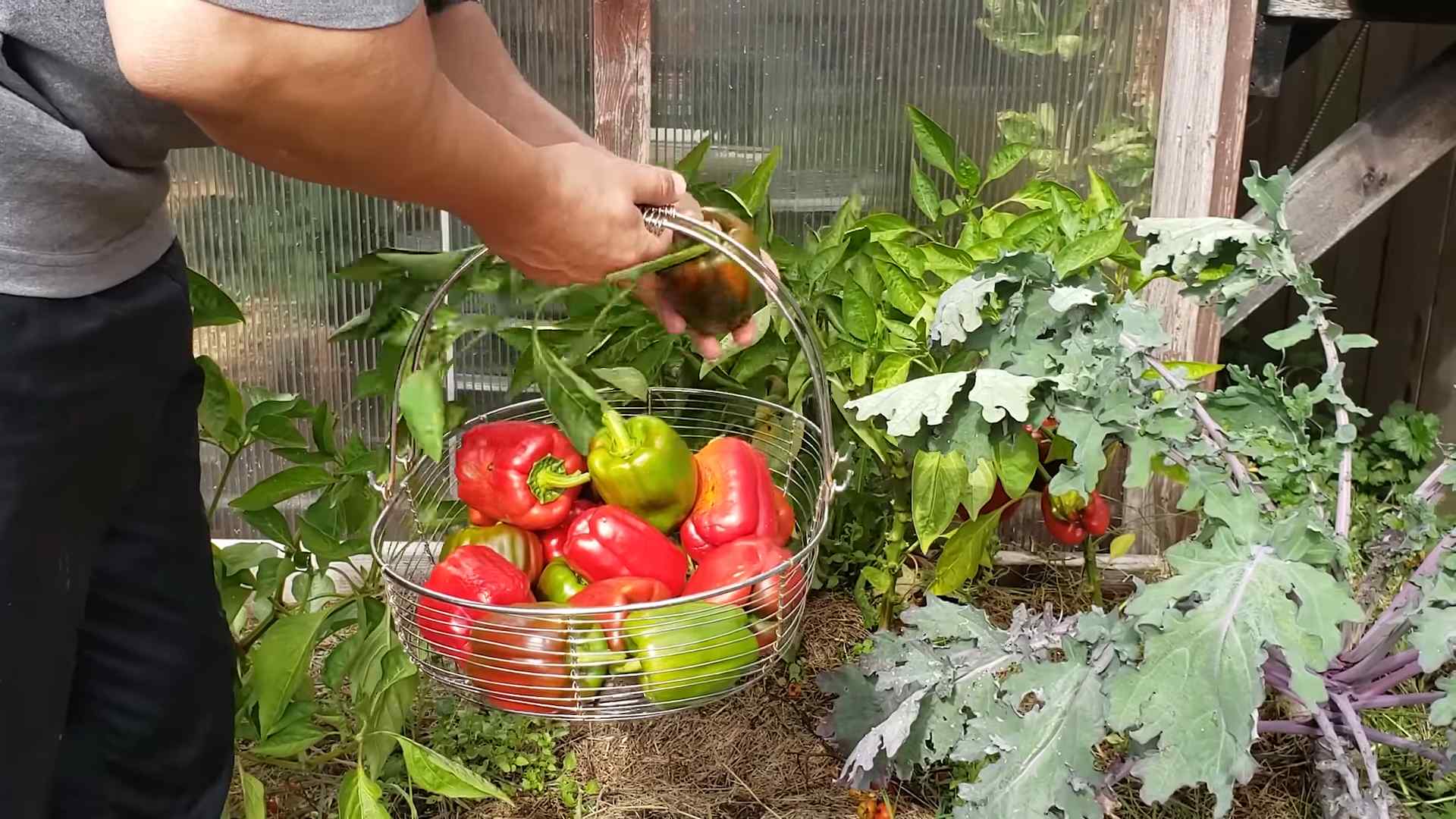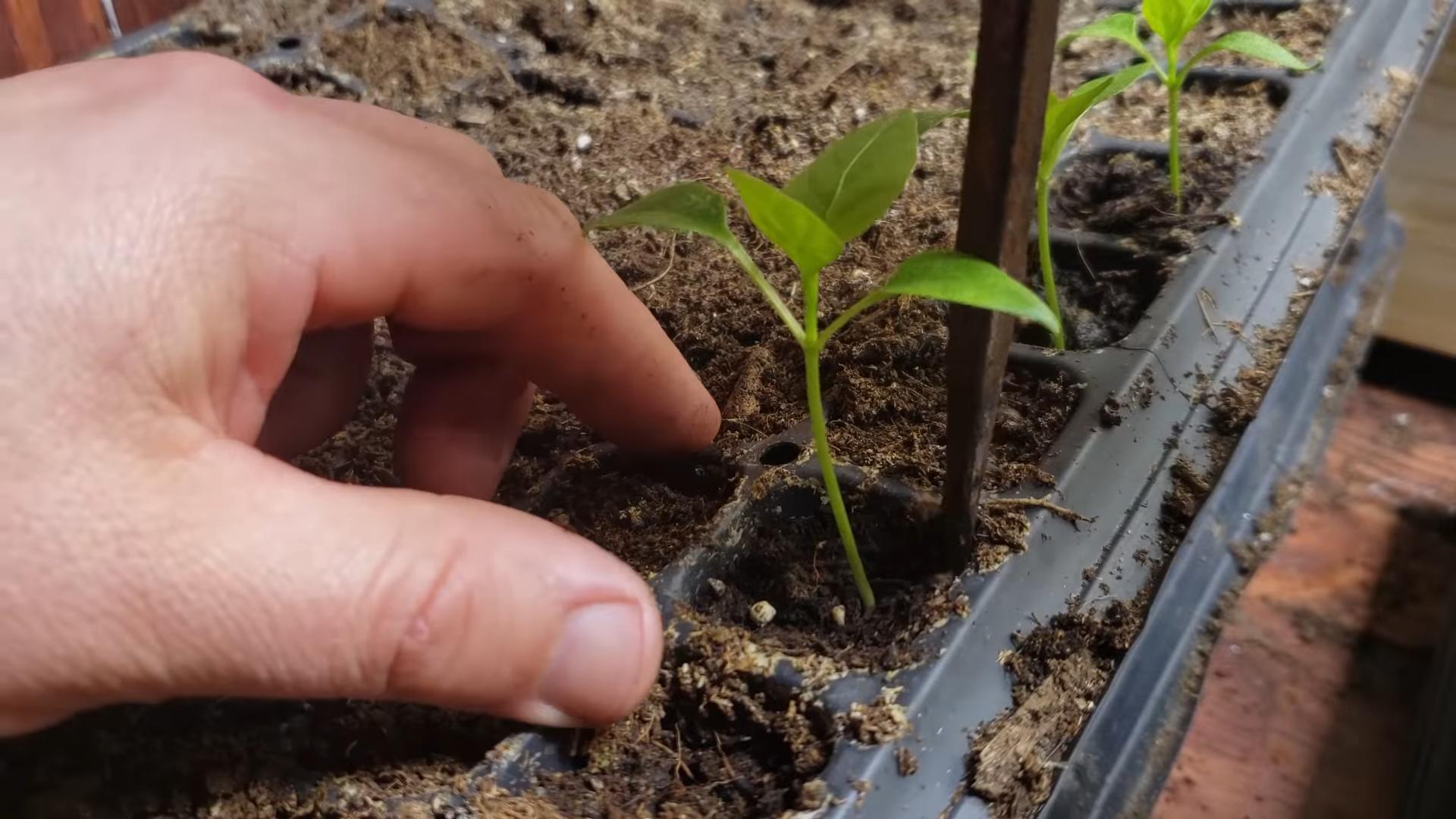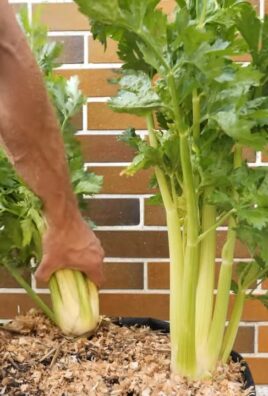Grow Peppers in Small Spaces? Absolutely! Imagine plucking vibrant, juicy peppers right from your balcony or windowsill. It’s not just a dream; it’s an achievable reality with the right know-how. For centuries, humans have cultivated food in limited areas, from ancient rooftop gardens in bustling cities to meticulously planned kitchen gardens in medieval monasteries. This tradition speaks to our innate desire to connect with nature and provide for ourselves, even when space is at a premium.
But why should you bother learning how to grow peppers in small spaces? Well, think about it: fresh, organic peppers at your fingertips, bursting with flavor and nutrients. No more questionable supermarket produce! Plus, gardening is incredibly therapeutic. It’s a fantastic way to de-stress, connect with the earth, and add a touch of green to your urban jungle. In this article, I’m going to share some simple, effective DIY tricks and hacks that will empower you to cultivate a thriving pepper patch, no matter how limited your space may be. Get ready to unleash your inner gardener and enjoy the delicious rewards!

Growing Peppers Like a Pro, Even in Tiny Spaces!
Hey there, fellow gardening enthusiasts! So, you’re dreaming of fresh, flavorful peppers straight from your garden, but you’re short on space? Don’t worry, I’ve got you covered! I’ve been growing peppers in containers and small gardens for years, and I’m here to share all my secrets to help you achieve a bountiful harvest, no matter how limited your area is. Let’s dive in!
Choosing the Right Pepper Varieties
First things first, not all peppers are created equal, especially when it comes to container gardening. Some varieties are naturally more compact and well-suited for smaller spaces. Here’s what I recommend:
* Compact Varieties: Look for peppers labeled as “dwarf,” “compact,” or “bush” varieties. These are bred to stay smaller and produce well in containers. Some of my favorites include:
* ‘Patio Bell’: A miniature bell pepper that’s perfect for containers.
* ‘Lunchbox Peppers’: These sweet, snack-sized peppers come in a variety of colors and are super productive.
* ‘Thai Hot’: If you like some heat, Thai peppers are compact and prolific.
* ‘Jalapeño M’: A more compact jalapeño variety.
* Consider the Size of the Mature Plant: Even if a pepper isn’t specifically labeled as “compact,” check the plant’s mature size before buying. You want something that won’t outgrow its container too quickly.
* Think About Your Taste Preferences: Do you prefer sweet bell peppers, spicy jalapeños, or something in between? Choose varieties that you’ll actually enjoy eating!
Setting Up Your Pepper Paradise
Now that you’ve chosen your pepper varieties, it’s time to create the perfect growing environment. Here’s what you’ll need:
* Containers:
* Size Matters: For most pepper varieties, I recommend a container that’s at least 12 inches in diameter and 12 inches deep. Larger containers (15-20 inches) are even better, as they provide more room for the roots to grow and hold moisture longer.
* Material: Plastic, terracotta, or fabric pots all work well. Fabric pots are great because they allow for excellent drainage and aeration.
* Drainage: Make sure your containers have drainage holes! Peppers hate sitting in soggy soil.
* Potting Mix:
* Avoid Garden Soil: Don’t use garden soil in containers! It’s too heavy and doesn’t drain well.
* Use a High-Quality Potting Mix: Look for a potting mix that’s specifically formulated for containers. It should be lightweight, well-draining, and contain some organic matter. I like to add some compost to my potting mix for extra nutrients.
* Sunlight:
* Peppers Love Sun: Peppers need at least 6-8 hours of direct sunlight per day to thrive. Choose a location that gets plenty of sun.
* Supplemental Lighting: If you don’t have enough natural sunlight, you can supplement with grow lights.
* Support (Optional):
* Staking or Caging: Some pepper varieties, especially those with heavy fruit, may need staking or caging to prevent them from toppling over.
Planting Your Pepper Seedlings
Okay, you’ve got your containers, potting mix, and sunny spot ready. Now it’s time to plant those pepper seedlings!
1. Prepare the Container: Fill your container with potting mix, leaving a few inches of space at the top.
2. Remove the Seedling from its Container: Gently squeeze the sides of the seedling’s container to loosen the roots. Carefully remove the seedling, being careful not to damage the roots.
3. Loosen the Roots: Gently loosen the roots of the seedling with your fingers. This will encourage them to spread out and establish themselves in the new container.
4. Plant the Seedling: Dig a hole in the potting mix that’s large enough to accommodate the seedling’s root ball. Place the seedling in the hole and backfill with potting mix. The top of the root ball should be level with the surface of the potting mix.
5. Water Thoroughly: Water the seedling thoroughly after planting. This will help settle the soil and get the roots off to a good start.
6. Add Support (If Needed): If you’re using a stake or cage, install it now.
Caring for Your Pepper Plants
Now that your pepper plants are in their new homes, it’s time to provide them with the care they need to thrive.
* Watering:
* Water Regularly: Peppers need consistent moisture, especially when they’re actively growing and producing fruit. Water deeply whenever the top inch of soil feels dry to the touch.
* Avoid Overwatering: Overwatering can lead to root rot, so make sure your containers have good drainage.
* Water in the Morning: Water in the morning so the foliage has time to dry before nightfall, which can help prevent fungal diseases.
* Fertilizing:
* Feed Regularly: Peppers are heavy feeders and need regular fertilization to produce a good crop.
* Use a Balanced Fertilizer: Use a balanced fertilizer (e.g., 10-10-10) or a fertilizer specifically formulated for vegetables.
* Follow the Instructions: Follow the instructions on the fertilizer label carefully. Over-fertilizing can damage your plants.
* Consider Organic Options: Fish emulsion and compost tea are great organic options for fertilizing peppers.
* Pruning:
* Pinch Off Early Flowers: Pinch off the first few flowers that appear on your pepper plants. This will encourage the plant to focus on vegetative growth and develop a strong root system before producing fruit.
* Remove Suckers: Remove any suckers (small shoots that grow from the base of the plant) to improve air circulation and encourage fruit production.
* Pest and Disease Control:
* Inspect Regularly: Inspect your pepper plants regularly for pests and diseases.
* Common Pests: Aphids, spider mites, and whiteflies are common pests of pepper plants.
* Organic Pest Control: Insecticidal soap, neem oil, and horticultural oil are effective organic options for controlling pests.
* Common Diseases: Blossom end rot, fungal leaf spots, and viral diseases can affect pepper plants.
* Preventative Measures: Good air circulation, proper watering, and healthy soil can help prevent diseases.
* Remove Infected Leaves: Remove any infected leaves to prevent the spread of disease.
Dealing with Blossom End Rot
Blossom end rot is a common problem in peppers (and tomatoes), especially in container gardens. It’s caused by a calcium deficiency, which can be exacerbated by inconsistent watering. Here’s how to prevent and treat it:
* Maintain Consistent Watering: Water your pepper plants regularly and deeply to ensure they get enough calcium.
* Add Calcium to the Soil: You can add calcium to the soil by mixing in some bone meal or crushed eggshells.
* Use a Calcium Spray: If you’re already seeing signs of blossom end rot, you can use a calcium spray to help the plants absorb calcium more quickly.
* Check Soil pH: Ensure your soil pH is within the optimal range (6.0-6.8) for calcium uptake.
Harvesting Your Peppers
The moment you’ve been waiting for! Harvesting your peppers is the most rewarding part of the process.
* Harvest When Ripe: Harvest your peppers when they’re fully colored and firm to the touch. The exact color will depend on the variety.
* Use Pruning Shears or a Knife: Use pruning shears or a knife to cut the peppers from the plant. This will prevent you from damaging the plant.
* Harvest Regularly: Harvest your peppers regularly to encourage the plant to produce more fruit.
Extending the Growing Season
Even if you live in a colder climate, you can extend your pepper growing season with a few simple tricks:
* Start Seeds Indoors: Start your pepper seeds indoors 6-8 weeks before the last expected frost.
* Use a Cold Frame or Greenhouse: A cold frame or greenhouse can protect your pepper plants from frost and extend the growing season.
* Bring Containers Indoors: If you have a sudden cold snap, you can bring your containers indoors to protect your pepper plants.
Troubleshooting Common Problems
Even with the best care, you may encounter some problems along the way. Here are some common issues and how to address them:
* Yellowing Leaves: Yellowing leaves can be caused by a variety

Conclusion
So, there you have it! Growing peppers in small spaces isn’t just a pipe dream; it’s an achievable reality with a little ingenuity and the right approach. We’ve explored the secrets to maximizing your yield, even when square footage is limited. From selecting compact pepper varieties to mastering container gardening techniques and optimizing sunlight exposure, you’re now equipped with the knowledge to cultivate a thriving pepper patch, no matter how small your balcony, patio, or windowsill may be.
This isn’t just about saving money on groceries (though that’s a definite perk!). It’s about connecting with nature, experiencing the satisfaction of nurturing something from seed to harvest, and enjoying the unparalleled flavor of homegrown peppers. Imagine the vibrant colors and spicy aromas filling your small space, a testament to your green thumb and resourcefulness.
But don’t stop there! Experiment with different pepper varieties to discover your favorites. Try growing bell peppers, jalapeños, habaneros, or even ornamental peppers for a splash of color. Consider companion planting basil or marigolds alongside your peppers to deter pests and attract beneficial insects. You can also explore different container materials, from terracotta pots to repurposed buckets, to find what works best for your aesthetic and budget.
The key takeaway is that growing peppers in small spaces is all about adaptability and creativity. Don’t be afraid to tweak the techniques we’ve discussed to suit your specific environment and preferences. The more you experiment, the more you’ll learn and the more successful you’ll become.
We’re confident that you’ll be amazed by the abundance you can achieve, even in the most compact settings. So, grab your seeds, gather your containers, and get ready to embark on a rewarding journey of urban gardening.
We can’t wait to hear about your experiences! Share your photos, tips, and challenges in the comments below. Let’s create a community of small-space pepper growers, supporting each other and celebrating the joys of homegrown goodness. What are you waiting for? Start growing peppers in small spaces today and taste the difference!
Frequently Asked Questions (FAQ)
What are the best pepper varieties for small spaces?
Choosing the right pepper variety is crucial for success in small-space gardening. Compact or dwarf varieties are your best bet. Look for peppers that are naturally smaller in size and have a bushier growth habit rather than sprawling vines. Some excellent choices include:
* **’Patio Bell Pepper’:** As the name suggests, this variety is specifically bred for container gardening and produces sweet bell peppers on compact plants.
* **’Jalapeño M’:** A smaller jalapeño plant that still packs a flavorful punch.
* **’Thai Hot Ornamental’:** These peppers are not only spicy but also visually appealing, adding a pop of color to your small space.
* **’Mini Sweet Peppers’:** These come in a variety of colors and are perfect for snacking. They are also relatively compact.
* **’Hungarian Wax’:** A moderately spicy pepper that grows well in containers.
Always check the plant’s mature size before purchasing seeds or seedlings to ensure it will fit comfortably in your available space.
What size container do I need for growing peppers?
The ideal container size depends on the pepper variety you choose. Generally, a container that is at least 12 inches in diameter and 12 inches deep is recommended for most pepper plants. Larger varieties, like bell peppers, may benefit from a 5-gallon container or larger. Make sure the container has drainage holes to prevent waterlogging, which can lead to root rot.
How much sunlight do peppers need?
Peppers are sun-loving plants and require at least 6-8 hours of direct sunlight per day to thrive. If you don’t have a sunny spot, consider using grow lights to supplement natural light. Position your containers in the sunniest area of your balcony, patio, or windowsill. Rotate the containers regularly to ensure even sun exposure on all sides of the plant.
What type of soil is best for growing peppers in containers?
Use a well-draining potting mix specifically formulated for containers. Avoid using garden soil, as it can become compacted in containers and hinder drainage. A good potting mix will retain moisture while allowing excess water to drain away, providing the ideal environment for pepper roots to grow. You can also amend your potting mix with compost or other organic matter to improve its fertility and drainage.
How often should I water my pepper plants?
Water your pepper plants regularly, especially during hot and dry weather. Check the soil moisture by sticking your finger about an inch deep into the soil. If the soil feels dry, it’s time to water. Water deeply until water drains out of the drainage holes. Avoid overwatering, as this can lead to root rot. Mulching around the base of the plants can help retain moisture and reduce the need for frequent watering.
How often should I fertilize my pepper plants?
Peppers are heavy feeders and benefit from regular fertilization. Start fertilizing your plants a few weeks after transplanting them into their containers. Use a balanced fertilizer with equal amounts of nitrogen, phosphorus, and potassium. Follow the instructions on the fertilizer package for application rates. You can also use organic fertilizers, such as compost tea or fish emulsion. Fertilize every 2-3 weeks during the growing season.
How do I prevent pests and diseases from affecting my pepper plants?
Regularly inspect your pepper plants for signs of pests or diseases. Common pests that affect peppers include aphids, spider mites, and whiteflies. You can control these pests by spraying your plants with insecticidal soap or neem oil. Diseases that can affect peppers include blossom end rot, fungal leaf spot, and wilt. Prevent these diseases by providing good air circulation, avoiding overwatering, and using disease-resistant varieties.
What is blossom end rot and how can I prevent it?
Blossom end rot is a common problem in peppers and tomatoes, characterized by a dark, sunken spot on the bottom of the fruit. It is caused by a calcium deficiency, which is often due to inconsistent watering. To prevent blossom end rot, water your plants regularly and deeply to maintain consistent soil moisture. You can also add calcium to the soil by using a calcium-rich fertilizer or adding crushed eggshells to the potting mix.
How do I harvest my peppers?
Harvest your peppers when they have reached their mature size and color. Use a sharp knife or scissors to cut the peppers from the plant, leaving a small stem attached. The timing of harvest depends on the pepper variety and your personal preference. Some peppers are best harvested when they are green, while others are best harvested when they are red, yellow, or orange.
Can I overwinter my pepper plants?
Yes, you can overwinter your pepper plants in a frost-free location. Before the first frost, prune your plants back to about 6 inches tall and move them indoors. Place them in a sunny window or under grow lights. Water sparingly during the winter months. In the spring, gradually acclimate your plants to outdoor conditions before transplanting them back into their containers.




Leave a Comment